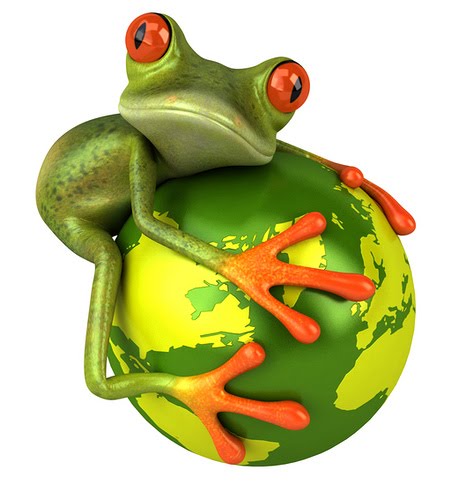
Global Warming Threatens Economic
Chaos in SE Asia

Southeast Asia is one of the world's most vulnerable regions to climate change and could face conflict over failing rice yields, lack of water and high economic costs, a major Asian Development Bank report shows.

Loud and Clear
Activists rally outside the U.S. embassy in Jakarta during the visit of U.S. State Secretary Hillary Clinton in February, 2009. Indonesia President Susilo Bambang Yudhoyono urged U.S. leadership on climate change
The region's economies could lose as much as 6.7 percent of combined gross domestic product yearly by 2100, more than twice the global average loss, according to the ADB's report on the economics of climate change in Southeast Asia.
"By the end of this century, the economy-wide cost each year on average could reach 2.2 percent of GDP, if only market impact is considered...(to) 6.7 percent of GDP when catastrophic risks are also taken into account," the British-government funded report said.
This compared with an estimated global loss of just under 1 percent of GDP in market impact terms, the Manila-based ADB said.

The global economic downturn could delay funding for climate change mitigation measures by regional governments.
Yet this was the time to offer incentives for green investment schemes in the energy and water sectors, said the study focusing on Indonesia, Philippines, Thailand and Vietnam. These schemes could involve the shift to renewable and clean energy options for the power and transport sectors across Southeast Asia, home to nearly 600 million people.
In particular, cutting carbon emissions from forest fires and deforestation was crucial since these were major contributors to the region's total emissions, it said. Renewable energies such as wind, solar, biomass and geothermal also offered great potential in slashing emissions.

But if nothing was done globally to fight climate change, Southeast Asia could suffer a decline in rice output potential of about 50 percent on average by 2100 against 1990 levels.
The yield drop ranged from 34 percent in Indonesia to 75 percent in the Philippines, with the fall forecast to start in 2020 for the four nations.
Southeast Asia is one of the most vulnerable regions to climate change because of the high economic activity along its long coastlines, and its heavy dependence on agriculture, forestry and other natural resources.
Unless the pace of climate change was checked, millions of people in the region would be left unable to produce or purchase sufficient food. "More people will be at risk of hunger and malnutrition, which will cause more deaths. The possibility of local conflicts may increase," said the report.
Annual mean temperature in the four countries could also rise by an average 4.8 degrees Celsius by 2100 from 1990 levels if global emissions keep growing. This would intensify water shortages in the dry season and raise flooding risks during wet periods.

The report says an increase in extreme weather events, such as droughts, floods and storms, and forest fires arising from climate change would also jeopardize export industries.
It said the region, which contributed 12 percent of the world's greenhouse gas emissions in 2000, had made significant efforts to counter climate change, but most steps were reactive and offered short-term benefits with implementation patchy.




















